What Size Notched Trowel For 6x6 Tile
Before y'all brainstorm setting tile, decide which tile trowel to apply. What should exist the right size? Should I apply a U-notched or a squared-notched trowel? Those are mutual questions you must ask yourself before starting your installation project. Basically, there is not a standard trowel size for tile installation, since it depends on the size and type of tile yous install. Each blazon of tile may require a differently sized trowel. Be concerned with the amount of coverage for the tile.
For instance; yous have ii different 24" ten 24" tiles for two dissimilar floors. Although they are the same dimension, each tile may require a different trowel size. If one of the tiles is adequately flat with minimum warping (cupping), you may meet the proper coverage requirement using a 3/viii" square-notched trowel. If, however, the other tile has quite a chip of cupping you may need to utilize a larger 1/2" square-notched tile trowel to get proper coverage.
Proper thinset mortar coverage means a minimum of 85% full coverage beneath a tile for a dry area installation (most floors, fireplace, etc.) and 95% minimum total coverage in a wet area (showers, tub surrounds, etc.). There is more to that requirement such as complete coverage beneath all 4 corners of the tile, but those are the basics.

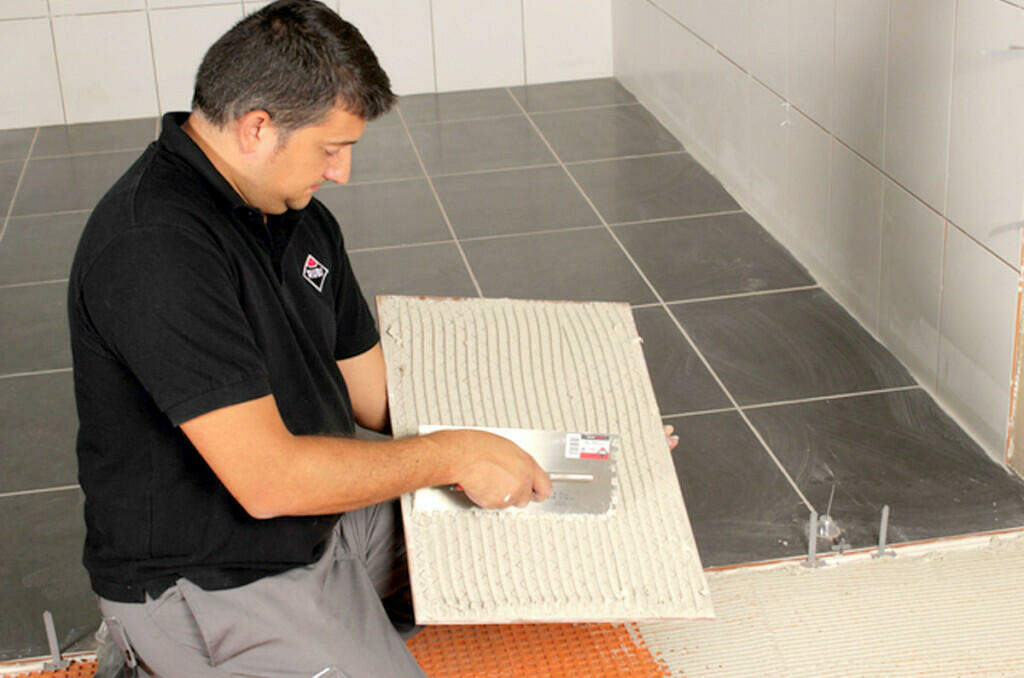
To become proper coverage you lot need to choose the correct sized trowel, one that will give you that corporeality of coverage beneath the tile. Check this past installing the tile as you ordinarily would, then pulling the tile up and checking the back. In that location should no longer exist any trowel lines and you lot volition run into consummate coverage of thinset on both the back of the tile and the substrate.
How trowel sizes are measured
The size and spacing of the trowel teeth are the footing to measure trowel size for tile. This tells you how much thinset the trowel volition leave on the substrate when you lot spread it out. The trowel'due south tooth shape and spacing determines how much thinset is sandwiched between the tile and substrate once the tile is fully installed.
RUBI manufactures tile trowels in two basic types, the square-notched and the U-notched. They are measured in the aforementioned fashion, the first number is the width of the notches (the distance between the teeth), the second number is the depth of the notch.
Foursquare-notched trowel
- Using a ane/2" x i/2" square-notched trowel will leave 1/two" ridges of thinset on the substrate with ane/ii" spaces between each ridge. A tile trowel with but 1 measurement (i.e. as 1/2" trowel) means that both measurements are the same.
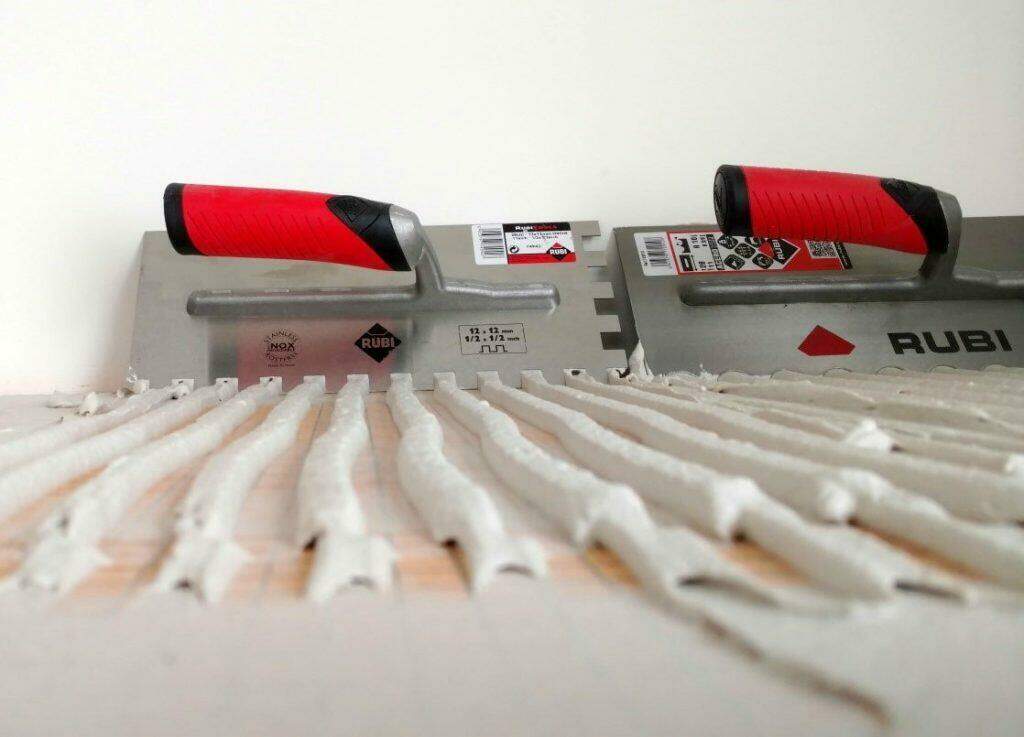
- When you utilize a 1/4" x iii/8" square-notched trowel you will leave 1/4" broad by 3/eight" high ridges of thinset on the substrate, with ¼" spaces between each ridge.
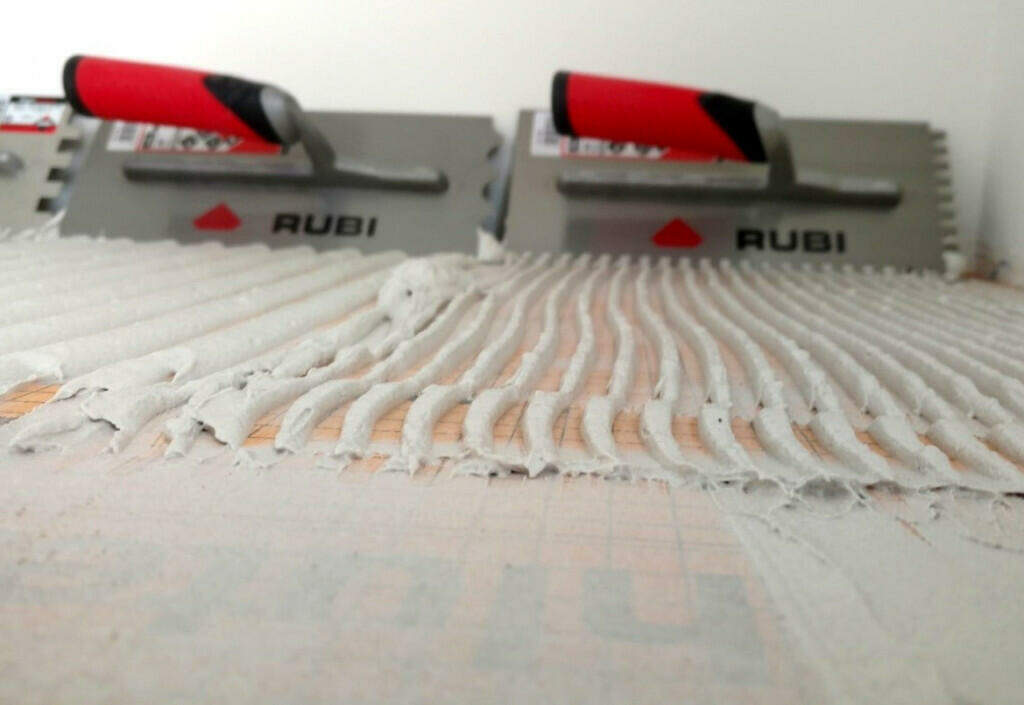
U-notched trowel
U-notched trowels normally simply accept 1 number. This is both the width and depth of the teeth. I am using a three/8" U-notched trowel, which has a half-moon shaped notch.
When you spread thinset with a U-notched trowel, information technology will leave half-round ridges on the substrate. The height of the ridges and the infinite between each ridge will exist the size of the trowel (in this instance three/8"). The width of each ridge volition DOUBLE the trowel size – 3/four".
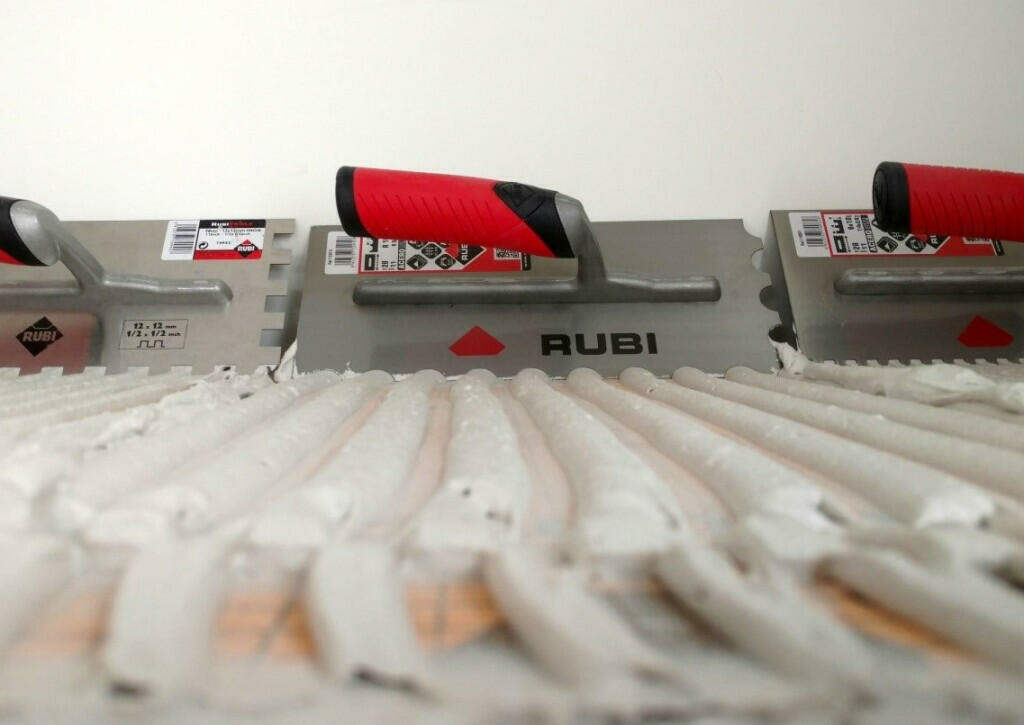
How much thinset will a trowel exit nether the tile
The trowel size for tile determines how much thinset to put on the substrate, every bit well as how thick the bed of thinset should exist under the tile.
When you employ a square-notched trowel with the aforementioned size notch and teeth (i.due east. a 1/2" x 1/2"), the bed of thinset will be half of that measurement, or ane/4", beneath a apartment tile over a flat substrate.
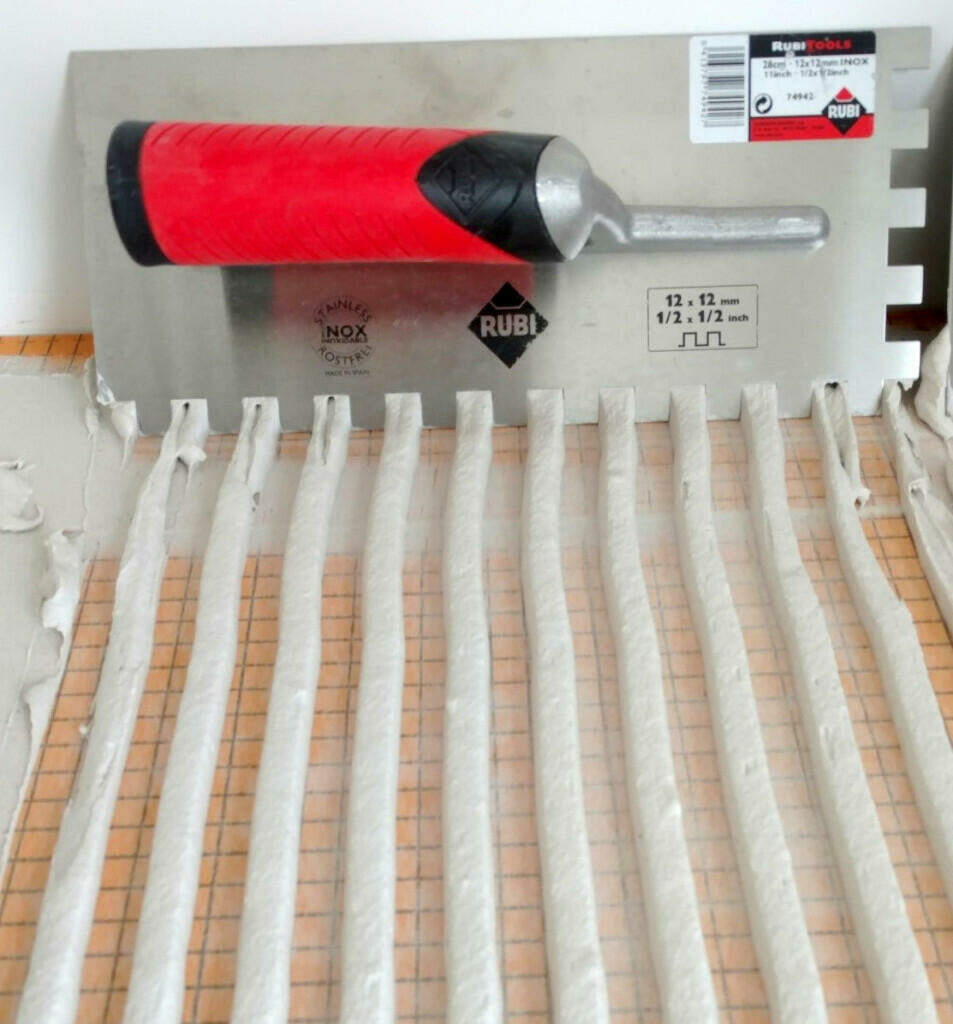
When you fully embed the tile into the bed of thinset, it spreads out the thinset ridges evenly into the spaces between the trowel lines. Since the spaces between the ridges take the same size every bit the ridges themselves, this will split the height of the ridges in half. So a one/2" x 1/2" trowel volition leave a 1/iv" high bed of thinset beneath the tile. A 3/8" 10 3/8"' trowel will leave a 3/sixteen" bed of thinset beneath the tile.
Using a U-notched trowel and embedding the tile into the thinset leaves you with a bed of thinset beneath the tile a little over ane/iii the size of the trowel teeth. So a 3/8" U-notched trowel leaves a i/8" bed of thinset beneath the installed tile.
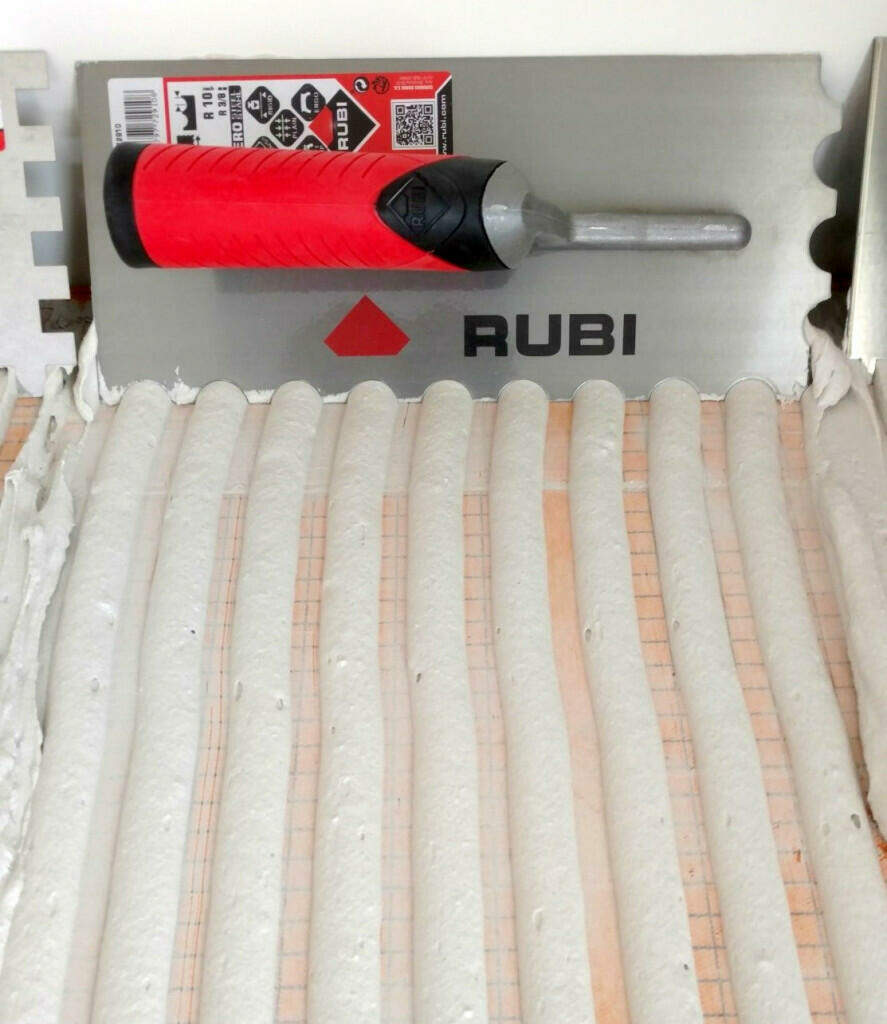

U-notched or square-notched trowel? Which shape of tile trowel to employ
Since a 3/8" U-notched trowel and a i/4" foursquare-notched trowel will both exit a 1/8" layer of thinset mortar beneath an installed tile, why choose 1 over the other?
The difference in trowel-notch shapes determines how easily the tile becomes fully embedded in the bed of thinset. In bones terms, it is easier to wiggle a tile into a bed of thinset put downwards with a u-notched than with a square-notched. Y'all collapse rounded ridges rather than square ridges.
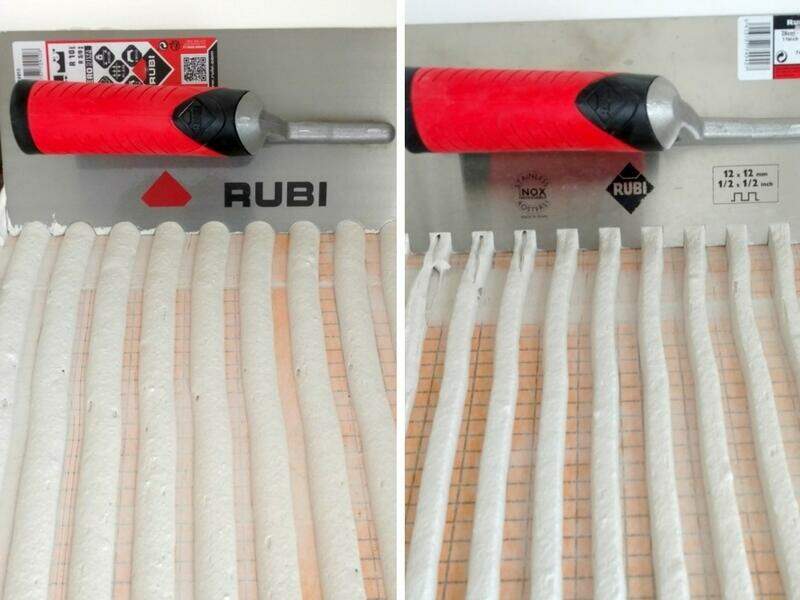
The foursquare ridges, put downwards with a foursquare-notched trowel, tend to collapse over on each side when you embed the tile into the bed. Pushing the tile down into the bed of foursquare ridges causes the ridges to fold over from the top of the ridge, then spread out.
A U-shaped ridge, on the other hand, spreads OUT when embedding a tile into the bed. Pushing a tile into the bed of rounded ridges causes the ridge of thinset to spread out, from the lesser, with less possibility of trapping air.
Which trowel size for tile to use
Determining which trowel size is proper for your installation depends on both the tile itself and the substrate. More accurately, information technology depends on how flat the tile and substrate are. The less flat the tile is, the more than thinset mortar you need beneath it, which means a larger trowel size.
Get-go, yous must know how much thinset mortar y'all want beneath the tile in the finished installation. A finished installation requires a minimum of 3/32" beneath the finished installation, aiming for a 1/8" minimum makes it easier to calculate the proper tile trowel size.
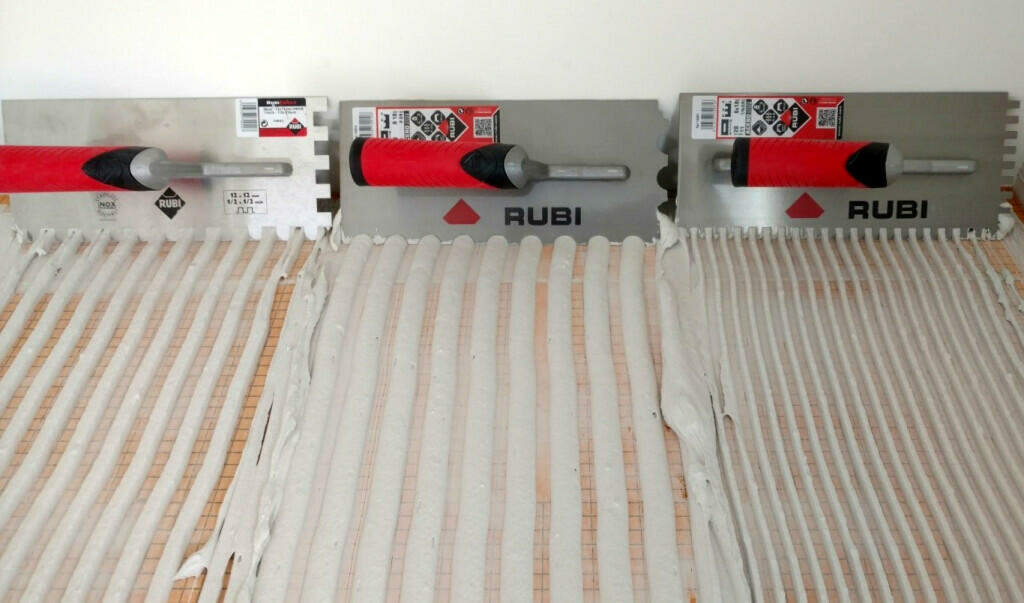
At that place are two basic ways to determine which size of the trowel to utilize: calculating the warpage (cupping) of the tile and substrate or visual inspection.
Computing the warpage (cupping)
Cupping of the tile means the amount of variation from the plane. That's merely a fancy style of maxim how 'out of flat' your tile is. Figure this out past placing the tile contiguous and squeezing one corner. If the tile is cupped, the opposite corner will not be contiguous, it will spread apart. Measure the corporeality of space betwixt the faces of the tile on the reverse corner then divide that number in half. That is the amount of cupping in the tile.
If squeezing the tile in this manner produces a i/4" space between the tiles in the reverse corner, information technology means the tile is cupped by 1/8". You must add this amount to the minimum thinset amount y'all want beneath the tile in order to get proper coverage!
If you want a minimum of one/viii" bed of thinset beneath the tile cupped past 1/8", you must utilize a trowel that will exit a one/iv" bed of thinset beneath the finished installation. A ane/two" square-notched trowel will achieve the proper coverage in that instance.
Visual inspection
Visual inspection is only fully embedding the tile into the bed of thinset mortar, then removing information technology and looking at both the substrate and the dorsum of the tile to determine whether y'all have proper coverage.
This tile was pushed down but about halfway into the bed of thinset. Notice the i/ii" square notched bed on the left side has the most coverage with the three/8" square notch in a close 2d. The u-notch in the eye has even coverage, merely you need a much larger notch to get the aforementioned amount of coverage.
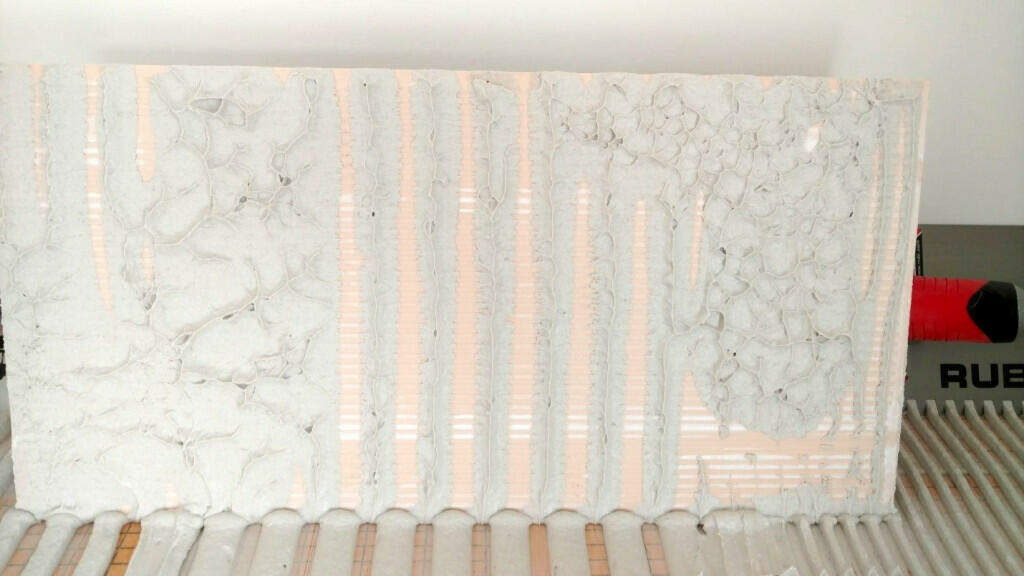
What's The Trowel Size for a 12×24 Tile?
When you calculate the amount of cupping in the tile to make up one's mind the properly sized trowel, y'all all the same demand to visually audit the coverage to ensure y'all utilise the proper size of the trowel!
To apply what we've learned in this article more practically, let's consider the correct trowel size for 12×24" tile? What kind of notches should information technology accept? Well, in perfectly flat conditions we want a layer of adhesive that's 1/8" to 1/4" thick.
But in real life, conditions are rarely perfect, so let's presume that we accept about a one/16th inch of cupping. Like we said earlier, we need to add the lippage to the normal recommended thickness for our agglutinative layer.
This gets united states a layer betwixt 3/16thursday and 5/16th inches thick, which is about a quarter inch.
Next, nosotros need to multiply this thickness of mortar by two, for square notches, or 3, for U notches, to figure out the ideal notch dimensions of our trowel. This comes out to foursquare notches of 1/2 inch by one/two inch or a rounded notches of 3/iv inch.
And in that location y'all have information technology! You've found the platonic notch size for your trowel!
Personal preferences
In a higher place and across using the proper method to get proper coverage for a successful installation, your personal preference will help decide which specific tile trowel you utilize for different types of installation.
Every bit a rule, the larger the tile the larger the trowel. It is always better to use a larger trowel than you might need for the installation. A footling actress thinset below a tile is completely acceptable, non plenty thinset beneath the tile is non acceptable.
U-notched vs. foursquare-notched is a personal preference. While information technology is easier to obtain complete coverage with a U-notched, y'all must also utilize a larger U-notched trowel to accomplish the aforementioned bed thickness beneath the installed tile. This is sometimes difficult with vertical installations. It is easier to continue a continuing ridge on a wall with smaller square-notched than with a larger U-notched.
U-notched trowels go far easier to keep thinset out of the grout lines as you embed the tile. In that location is more space between the half-moon ridges with a U-notched than there is with a foursquare-notched. This makes information technology easier to take the tile drib into the bed with the border over an open area between the ridges than over the peak of a standing ridge. Since the thinset spreads out, rather than folding over beginning, information technology is less likely that the thinset volition fill the grout line equally you embed the tile.
Your turn! Let me know your tips to cull the correct trowel size for tile!
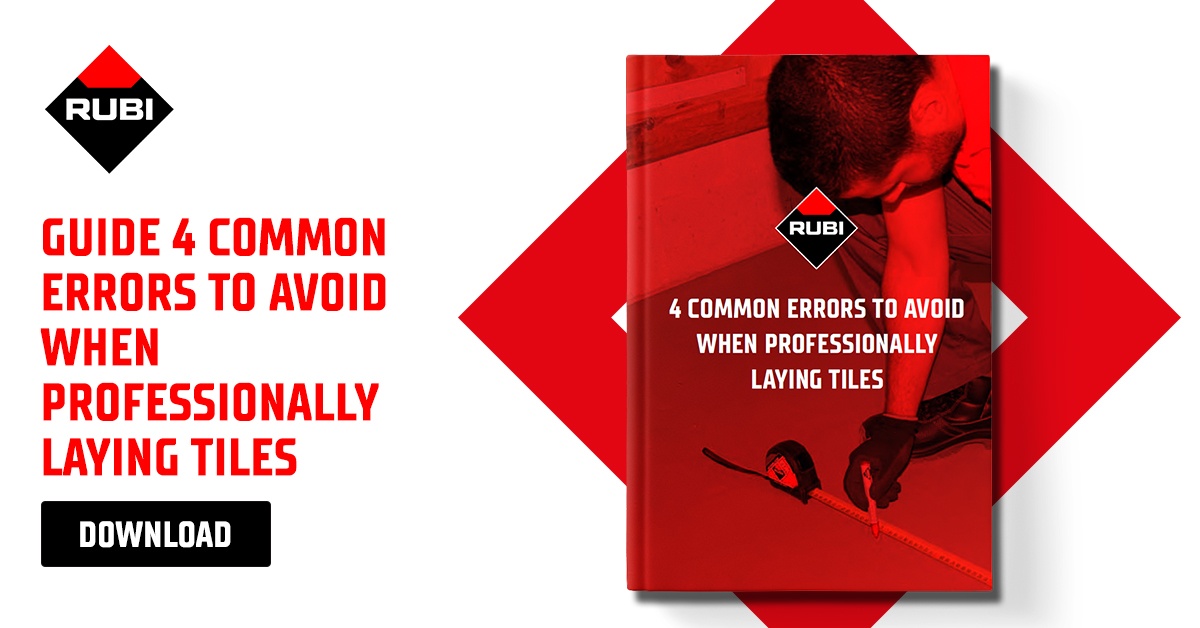
What Size Notched Trowel For 6x6 Tile,
Source: https://www.rubi.com/us/blog/trowel-size-for-tile/
Posted by: campbellcaming.blogspot.com


0 Response to "What Size Notched Trowel For 6x6 Tile"
Post a Comment